Throughout history, many nobles were considered to be mad, or were known to suffer from mental illnesses. Be it a glass delusion, Cotard’s syndrome (where someone believes they are dead), bipolar disorder, or what was likely schizophrenia, there were countless “mad” rulers.
One of the most interesting (allegedly) mad royals was Joanna the Mad (or Juana la Loca). This Spanish queen was so madly in love with her husband that she refused to bury him when he died.
Joanna the Mad was said to have exhumed her husband’s corpse and would sleep with his body at night. She was rumored to have demanded that she travel with his casket only under cover of night to prevent any women from seducing her dead husband.
While she loved him, he was constantly cheating on her, which made her so angry she once stabbed and cut off the hair of one of his mistresses. She was said to be so mad that she had her royal powers taken from her, and she was sent to live in isolation in a convent for most of her life due to her insanity.
However, was Joanna of Castile truly mad? Or was she a victim of an outrageous political smear campaign?
Joanna of Castile
Joanna of Castile (aka Joanna the Mad or Juana la Loca) was born on November 6, 1479, in Toledo, Castile, Spain. Her parents were Queen Isabella I of Castile and León and King Ferdinand of Aragon, who both were incredibly devoted Catholics.
They were so devoted to the Catholic Church that they founded the Spanish Inquisition, which although well intentioned would metamorphosize into a monster over the following centuries. Although Joanna was an infanta (princess), she was third in line behind her brother Juan and sister Isabella, and there were never any expectations of Joanna becoming the heir or ruler of Castile or Aragon.
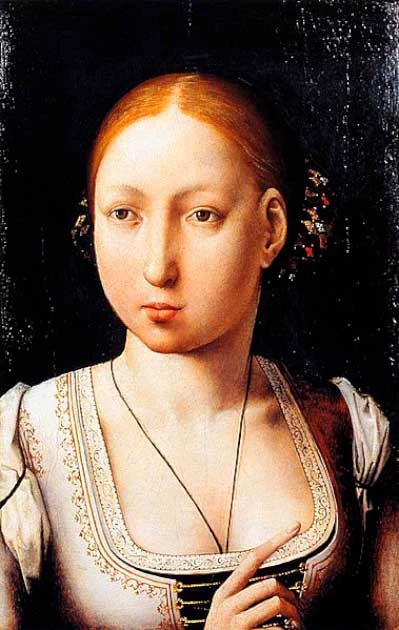
This did not mean the young Joanna was not well educated; she was said to be incredibly smart and studied law, writing, reading, history, philosophy, mathematics, and multiple foreign languages. Joanna of Castile was said to be fluent in French, Latin, and all three Iberian Romance Languages (Castilian, Catalan, and Galaico-Portuguese).
But she was more than just book-smart. Joanna of Castile was a keen falconer, hunter, dancer, and played multiple instruments. It seemed there was nothing this princess couldn’t do, if she turned her mind to it.
Joanna’s parents were determined to wed their children into positions of power and did so successfully. Her siblings were Isabella, Queen of Portugal; Juan (John), Prince of Asturias (the title given to the ruler of Castile); Maria, Queen of Portugal; and Catherine of Aragon, Queen of England and first wife of Henry VIII.
In 1496, at 16, Joanna of Castile was married to 18-year-old Philip I, known as “Philip the Handsome”, Duke of Burgundy and son of Maximilian I, the Holy Roman Emperor. Their marriage made Philip the first Habsburg King of Castile.
Joanna of Castile fell deeply in love with Philip the second they set eyes on each other. There was one issue however: Philip was a notorious serial cheater.
Joanna was said to fly into a rage whenever Philip cheated on her and would scream at him. Instead of growing up and being devoted to his young bride, Philip spread rumors that Joanna of Castile was insane.
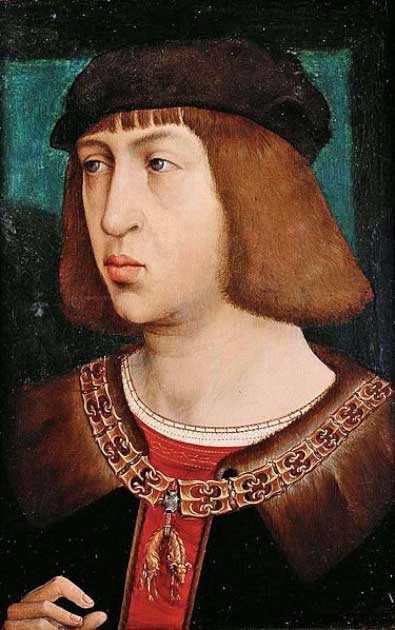
Philip and Joanna of Castile spent many years in Flanders, and Philip would often return home from trips without his wife just to have affairs with other women. Unfortunately, his behavior only got worse as time went on.
Loss
When Joanna of Castile was 17, she experienced several deaths between 1497 and 1500. Her brother Juan (John) died, and not long after his passing, his widowed wife had a stillbirth. Her older sister Isabella died during childbirth, and around two or so years later, Isabella’s toddler son suddenly died as well.
Joanna loved her siblings dearly, and these losses greatly affected her. The deaths also made Joanna the new heir to Castile, León, and Aragon. This was a role she was never expected to inherit and was never taught about how to rule several kingdoms. That is a lot for anyone to take on at once.
In 1502, Joanna and Philip returned to Toledo from Flanders so Joanna of Castile could be recognized as Princess of Asturias. It seems that Joanna of Castile may have suffered a genuine, if slight, mental breakdown later that year.
It may have been due to grief, stress, and the fact that she was constantly pregnant for a ten-year period on top of everything else in her life. Philip didn’t help the situation and would literally leave the castle to sleep with other women when Joanna’s “behavior got to be ‘too much’ for him.”
This made the hormonal and emotionally fragile Joanna of Castile understandably angry, and her reactions were a bit intense. She was said to throw herself against walls to self-harm, scream at Philip, cry herself to sleep, go for periods without sleeping or eating, and would sometimes wander around the castle at night mumbling to herself.
Philip would blame her anger and behavior on her being mentally unstable and use it to support his rumors. He was a real stand-up guy.
More Loss and Abuse
Joanna of Castile could never catch a break, and in 1504, her mother, Isabella, became gravely ill. The relationship between Isabella and Joanna was known to be tumultuous.
Some scholars claim Isabella tortured Joanna for lack of religious enthusiasm at one point in her life (these claims have not been fully supported). Still, Joanna of Castile loved her mother and refused to leave her bedside. So distraught over her mother’s illness, Joanna of Castile stopped sleeping and eating, even though she was heavily pregnant at the time.
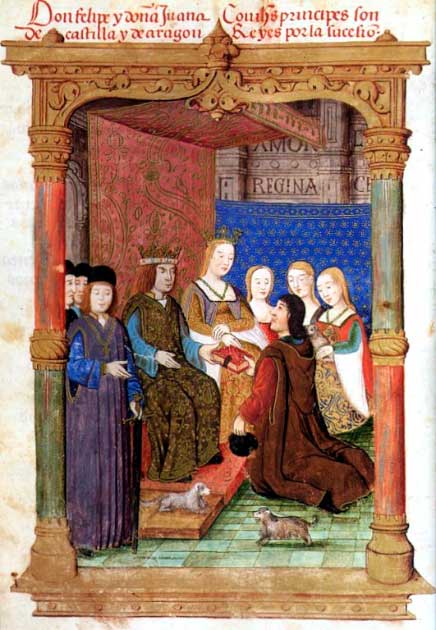
At this point Philip randomly left, again, to return to Flanders without telling his wife of his plans, which did not go over well. Joanna was desperate to go after him, but from her deathbed, Isabella forbade her daughter from leaving and had Joanna of Castile restrained and held captive in the castle.
This was a little over the top, but Isabella might have been trying to protect her daughter. At the time, France was at war with Spain, and Joanna would have to go by sea and carriage through the fighting; she was incredibly pregnant, and a second round of the Bubonic Plague was ravaging Europe.
After giving birth to her child, Joanna of Castile begged her parents to let her return to Philip in Flanders, but they again said no. Joanna was madly in love with Philip and became so desperate to leave her parent’s castle that she was said to have run out of the castle, half-dressed, and threw herself against the castle gates screaming until she collapsed from exhaustion.
Joanna was finally permitted to return to Flanders one year after her baby was born. When she arrived, what did she find? Philip in bed with another woman.
Joanna was said to have become so angry that she attacked the mistress, cut off all of the woman’s hair, and stabbed her in the face with scissors. Her response may have been violent but remember, she was held captive and restrained by her parents for over a year, gave birth to a child, traveled from Spain to the Netherlands, which took a long time, and was greeted with Philip cheating on her. Can you blame Joanna of Castile for slightly flying off the handle?
Stabbing a woman in the face did nothing to change Philip’s ways, and in desperation, Joanna of Castile supposedly went to local witches to buy love potions to make Philip love her as much as she loved him. All it managed to do was give Philip more examples of his wife being “crazy”.
None of this was good for Joanna’s reputation, and his rumors grew worse once Isabella died. Joanna of Castile suddenly inherited the title of Queen of Castile and León, which made Philip the Queen’s consort, a title he was not happy to have now earned.
It Keeps Getting Worse
It wasn’t just Philip who was unhappy about Joanna of Castile’s new role; her father, Ferdinand, was not happy either. By then, in 1505, Joanna of Castile had five children of her own, and her oldest son Charles became the new heir to the throne.
This only made Ferdinand angry because young Charles was being raised in Flanders by Philip’s Habsburg relatives. In response to his grandson being raised by more important royals, Ferdinand remarried and tried to have a child with his second wife.
If Ferdinand’s wife had a baby, the child would supplant Joanna of Castile as his heir to the throne of Aragon. Ferdinand, who was known to not like Philip, called him for a secret meeting not long after he remarried.
In this meeting, Ferdinand agreed to give Castile to his children, through Joanna, and he would return to Aragon. But there was a wrinkle in the agreement.
A clause was added that essentially stated that due to Joanna of Castile’s alleged insanity, she would be found unable to rule and would thus be excluded from making any political decisions, essentially handing power to her husband, Philip. To add insult to injury, the clause stated that Joanna of Castile was to be confined in the castle for her own “safety”.
One year later, in 1506, Philip the Handsome suddenly died of what was claimed to be typhoid fever. However, everyone felt that the official cause of death was a lie and that Ferdinand likely poisoned Philip to regain his throne in Castile.
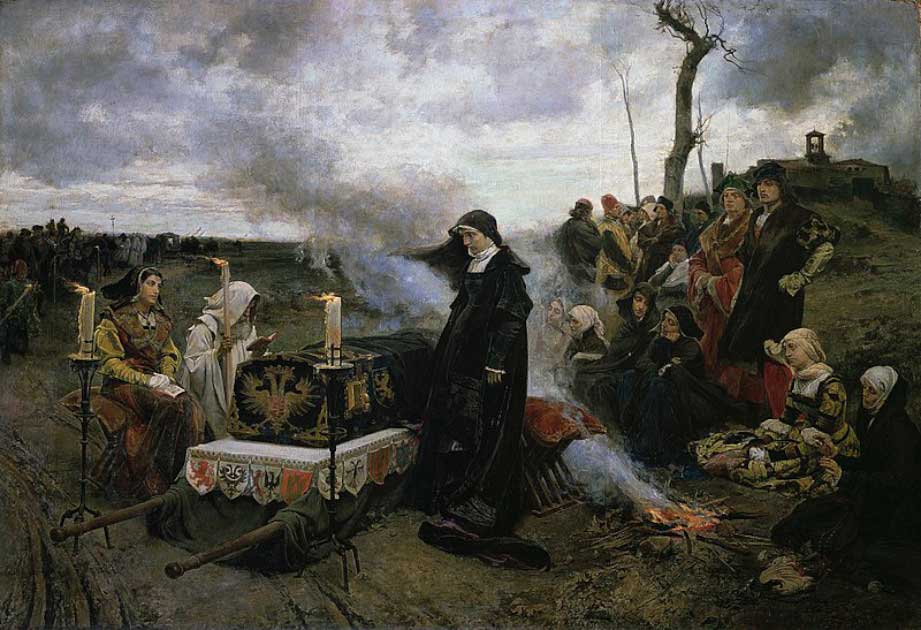
His death devastated Joanna of Castile. She lost the love of her life while pregnant with what would be their last child. She was so distraught that she was alleged to have not permitted Philip to be buried and took his body everywhere.
Once again, this was mostly a rumor. Joanna of Castile had Philip’s casket placed in a church near the castle so she could pay respects to him daily. She also would bring the coffin with her as she traveled. Again, not typical behavior, but everyone reacts to loss differently, and this was how she responded.
In 1507 Ferdinand decided to make a joyous return to Castile. He chose a weird time to return because Castile was at the tail end of an outbreak of the plague.
- The Blood Countess of Hungary: Was Elizabeth Báthory a Vampire?
- Hypatia of Alexandria: A Classical Age Female Scholar
Ferdinand strode in when the plague was ending and made it seem like it was divine intervention that the plague went away when he showed up. Back in Castile, he took up Philip’s old job of spreading rumors that Joanna of Castile was mad and unfit to rule.
He even went as far as appointing himself as his adult daughter’s legal guardian. Joanna of Castile had given birth to Philip’s daughter Catherine and was ready to start ruling when her father returned. She was asked to sign away her royal powers and refused, leaving her as Queen only in name.
In response, Ferdinand demanded Joanna of Castile be confined to the Royal Convent of Santa Clara in Tordesillas, Castile, for the indefinite future. All five of Joanna’s children were shipped off to Flanders to be raised by Philips relatives, but when baby Catherine was to be taken away, Joanna of Castile refused.
This baby was the only living piece of her beloved Philip she had left and would not let her go. So Ferdinand solved the problem by sending baby Catherine to the convent with his daughter.
When Ferdinand finally died, Joanna’s eldest son Charles and his sister Eleanor returned to Castile in 1517. They visited their mother and received her approval for their new role as Castile, León, and Aragon co-rulers.
As the new king, Charles had the power to set his mother free, but he didn’t. Charles demanded that his mother no longer be permitted to see or speak to anyone.
Still trapped in the convent, Joanna of Castile’s mental condition further declined. She was said to have become paranoid that the nuns tasked with caring for her were trying to kill her. Joanna of Castile died alone, isolated in a convent, stripped of her birthright to the throne of Castile, León, and Aragon on April 12, 1555, at the age of 75.
Was Joanna Truly Loca?
It is challenging to say if Joanna of Castile was mentally unstable/mad or if she was the victim of a royal smear campaign by her unfaithful husband and greedy father. Not much of Joanna’s personal writings remain, and most accounts of her life were written two to four centuries after she died.
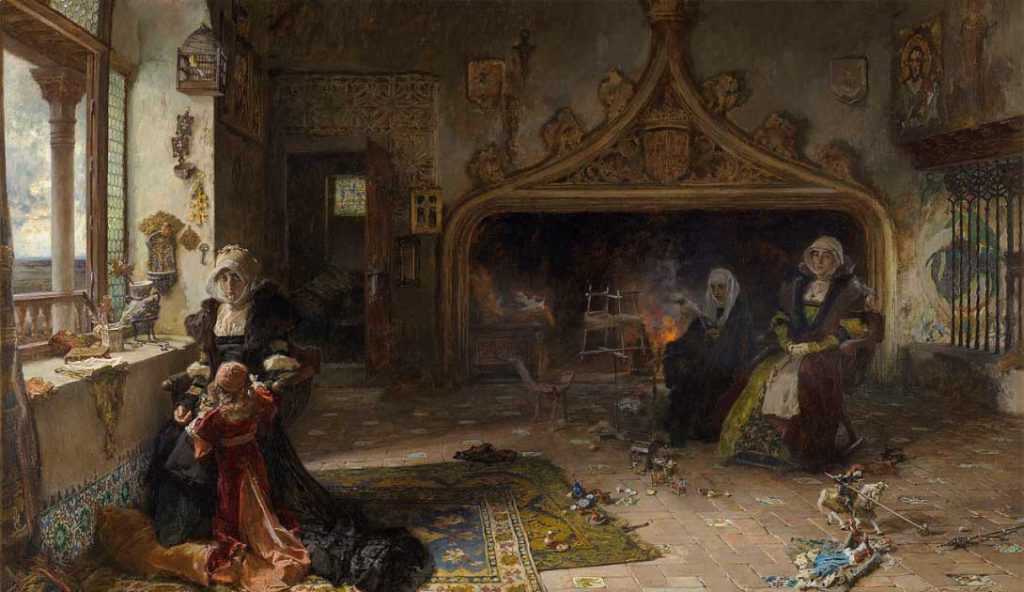
She has been depicted in films and fiction literature as a stark raving mad woman who, in some crazed medieval version of the film Weekend at Bernies carried around her husband’s corpse, pretending he was still alive. Joanna of Castile’s family has a history of mental illness, and she may have indeed inherited something of the family complaint.
Psychologists today believe Joanna of Castile might have suffered from either bipolar disorder or schizoaffective disorder. Schizoaffective disorder is defined by the National Alliance on Mental Illness as a “chronic mental health condition characterized primarily by symptoms of schizophrenia, such as hallucinations or delusions, and symptoms of a mood disorder, such as mania and depression.”
She may have had this condition, but rumors of Joanna experiencing delusions and hallucinations are only from secondhand accounts. The causes of schizoaffective disorder are unknown due to how rare the condition is. Still, genetics, brain chemistry, stress, and drug use (psychoactive drugs in particular) can contribute to the disorder.
If Joanna of Castile did have schizoaffective disorder, there are possible causes. Her family history of mental illness, her grief from the loss of her family and husband, the stress of suddenly being thrust into a royal role she was never expected or prepared to inherit, her six successful pregnancies in ten years (it is unknown if she gave birth to 10 children or only 6 of them survived, but she has been said to have been constantly pregnant for a ten year period).
Pregnancy hormones could have made her more emotional, and her depressive episodes may have been postpartum depression. She would not sleep or eat for long periods, which causes mental and emotional exhaustion.
On the other hand, you can argue that while Joanna of Castile likely had some sort of depressive disorder, she was doing her best in a time when mental illness was not recognized, and women were dominated by male power. Philip constantly cheating on her and suddenly leaving out of nowhere because he didn’t want to deal with Joanna of Castile being mad at him for his infidelity was likely upsetting to his wife.
She loved him, and she struggled with saying goodbye to him when he died. If rumors that she only carried around his casket at night to prevent other women from trying to seduce his corpse were true, this might have been due to extreme grief.
There were allegations of religious and physical abuse in Joanna of Castile’s youth, which cannot be proven. Still, she was emotionally and mentally abused by her parents and husband for most of her adult life.
She was restrained and kept captive in her parent’s castle when she wanted to follow Philip to Flanders when her mother was ill. She was held captive for a year after her child was born and became so desperate she tried to bust open castle gates with her own body.
Philip and Ferdinand gaslit her constantly and spread rumors making Joanna seem absolutely insane. She was intelligent, capable, and sensitive, but her husband and father prevented her from ruling her kingdoms.
We cannot say if Joanna of Castile was truly mad, but we can see she suffered for many years and was left isolated until her death. Mentally ill or not, we should only have sympathy for the tortured life of Joanna of Castile.
Top Image: Joanna the Mad: driven to madness or a political inconvenience? Source: Serikbaib / Adobe Stock.